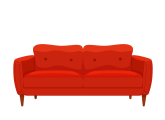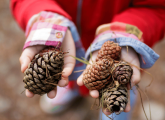Let the natural world inspire your little scientists with these outdoor ideas from charity Learning through Landscapes…
A child’s innate desire to explore the natural world requires them to use their senses, test out theories, make mistakes and persevere.
Exploring the natural world in this way enhances their development and doing so outdoors allows children enough space to:
Soil is an inexpensive natural play resource and in many settings is readily available. Adding water changes its consistency, making it ideal for mark making. In addition, minibeasts love it, and you can use it for growing too!
Create a digging pit so children can explore the soil while developing their gross motor skills, and provide a table so that they can easily manipulate it to develop their fine motor skills.
Read the story Jasper’s Beanstalk and give the children some beans and a magnifying glass. What colour are they? Are all seeds the same? How long does it take for a seed to germinate?
Set up a display where the children can put different seeds on damp kitchen paper to watch them germinate. Write questions on card and place them with the display. Which seed grows first? Try planting seeds outdoors and observe them in the same way.
Sand offers multisensory experiences to children as they can immerse their whole bodies when exploring it. It can be sprinkled, patted, moulded, dug and poured; dug up and transported from one place to another; or turned into a landscape for small world play.
In fact, the bigger the sandpit, the greater the opportunities! Sand also allows children to experiment alongside others, interacting, collaborating and socialising.
Place a portable tray on legs into a large sandpit to give children an opportunity to explore the sand at different levels.
If you don’t have a pulley system in your sandpit for moving sand, work with the children to create one using ropes, buckets, wood, bricks and hooks, attaching it to a fence, branch, wall or post.
Water has many fascinating properties that children love to explore. Very young children will investigate why things float and sink. Try pushing an inflated balloon down on the surface of the water and you can feel the resistance.
What happens to water displaced by objects dropped in it? What happens to water when you freeze it?
Collect a variety of resources such as Lego bricks, matchboxes, tubes, plastic containers, leaves, lids and straws, and set a challenge for the children to design and make a boat.
Which ones floats or sinks? Ask the children why they think this has happened.
From sticks and leaves to pebbles and rocks, the natural world offers more ‘affordances’ – opportunities to use them in many different ways – than most manufactured toys.
Playing with objects from the natural world like these gives children the chance to be more creative and imaginative, allowing them to explore and understand more about the world they live in.
Collect together samples of wood, straw and real red bricks (ask parents if they can donate any of these). Retell the story of The Three Little Pigs and let the children explore these materials and try to build homes for the pigs themselves. Which is the strongest? Why?
Learning through Landscapes offers a range of services to support outdoor learning and play in the early years.

Lockdown – How have Early Years staff coped?
Editors picks

Loose parts play – Unleashing children’s creativity
Editors picks
